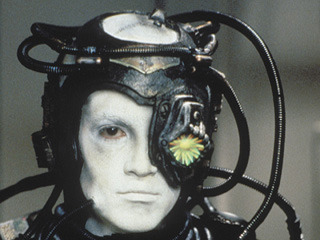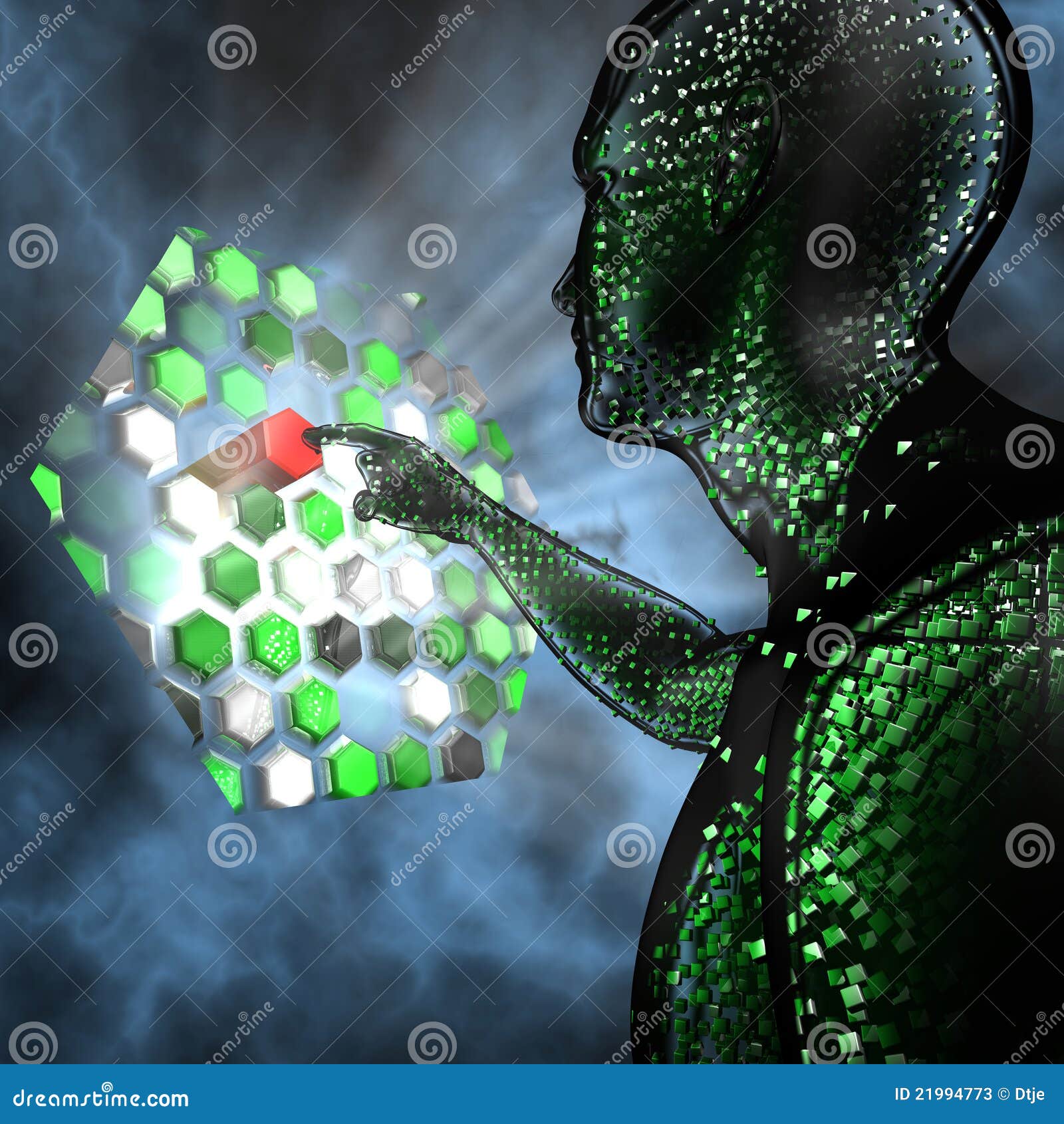I am cyBorg. Design for me.
For those of us who grew up on a steady diet of Star Trek: Next Gen runs and re-runs (but were never Trekkies), Borgs were undebatably a threat. An alien race of cybernetic antagonists, Borgs were singularly in pursuit of emotionless, mechanical perfection through the assimilation of the “biological and technological distinctiveness of other species” into their own. In this, they were everything humans were not. They lacked the individuality humans so prized; they were merely extensions of a collective “hive mind” into which threatening cultural Others were per force assimilated. As physical assemblages of cybernetic devices, the Borg represented the technological antithesis to our collective humanity. Although their mechanically repeated assertion that “resistance is futile” ranks now among the most recognized of TV quotes and catchphrases, resistance was also the only route to human survival.
Even then, however, things were not as we imagined. At roughly the time we were rejecting Borg assimilation, Donna Haraway’s 1985 "Cyborg Manifesto” was ironically rejecting human-machine dualism, and giving us radical new tools to think about our already inherently technological natures. Haraway’s powerful statement on the realities, political urgency, and possibilities of boundary-transgression would prove a critical document for (cyber)feminists, transhumanists, and social scientists studying human-technology interactions in decades to come.
In Haraway's account, the cyborg breaks down three kinds of boundaries:
- between humans and animals: think animal rights, or trans-genic organisms;
- between human-animals and machines: think prosthetics, pacemakers, and other technological devices around which our physical bodies could be built;
- between our physical and non-physical worlds: think miniaturized chips and devices that are barely there and yet everywhere, simply touchpoints for signals, electromagnetic waves, or sections of spectra.
Although we imagined the Borg seeking the assimilation of recalcitrant humans somewhere in the far reaches of the 24th century, by even the “mythic time” of the late 20th century, cyborgs were the new reality. “We are all chimeras,” Haraway wrote, “theorized and fabricated hybrids of machine and organism; in short, we are cyborgs.”
There is much more to say about Haraway’s “Manifesto," science studies, and feminism, but for now I’m concerned with only a simple question: what does it mean to think of each one of ourselves as everyday 21st century cyborgs?
I’m not specifically thinking of those “real life cyborgs” who have implanted chips in their arms or those whose injuries have required the use of prosthetics. I’m thinking of each one of us who has had an experience of the rapidly expanding, uncharted, and nebulous spaces of human interaction with technologies—an interaction which simultaneously extends and transforms our humanness. But in what ways? And how might this new information change the designer's task?
I’ll speak briefly about myself.
My phone has become, as a friend’s daughter insightfully quips, my third child. She uses an intimate biological metaphor of self-identification (motherhood) to describe an assemblage of circuits and plastic (my phone) that is, quite like a nursing infant, always on my hip and in my care. And thanks to my third child, I’m always occupied, able to connect, able to communicate, able to play, and able to get work done wherever I am. There is no more waiting.
The space of “social” is not just giving me new modes of communication or connectivity, it’s encouraging me to project my thoughts, “likes,” images, emotions, ideas, reactions, memories, and more into digital nets online. Years before, when I would submit a comment to a listserv, I could rest assured that the archive would exist in perpetuity: a comment I once left on the location of the Feminist bookstore Streelekha in Bangalore still appears on google searches. Now, however, it’s not just a comment archive that’s out there, but an entire, complex, and almost unfathomable record of projected personhood—one which, I might add, companies and governments alike are tripping over each other to figure out how to collect, access, and use. It’s a persona I must now manage carefully, for employers and others can recall it at will. There is no more forgetting, maybe also no escaping.
My memories of my children’s birth and growth were stored first in boxes, then on CDs, DVDs, and external hard disks, and now on the Cloud—a place above all else where, I’m told, I’ll soon be doing all my thinking. I back it up in a few different places. Mental activity is externalized. There is no more memory loss. My memories can be hyperlinked and inter-linked with the memories of other people, institutions, and nations in repositories like the Indian Memory Project. I can incorporate myself into history. There is no more exclusion.
Or is there?
I could go on, but the point is that with each new experience with technology, there is something about our human being that shifts: sitting, standing, talking, working, waiting, exercising, remembering, thinking, and more. And the results can be powerfully transformative, even liberating.
But equally, there open out a host of equally human ailments—distraction, junk sleep, isolation (from face-to-face encounters), repetitive movement injury, and more—all equally part of the transformation of our human-ness. We get hurt, we suffer, we become anxious, we wish for respite (think: digital detox), and we return to "nature" in new ways.
It’s worth remembering that Haraway was careful not to project the “cyborg” as utopian solution to human difficulties, but a tool of being able to reach across all our many differences and see multiple perspectives at once “because each reveals both dominations and possibilities unimaginable from the other vantage point.”
As an anthropologist, this capacity to traverse perspectives matters enough to convince me to embrace my inner cyBorg. But seeing things from multiple perspectives raises new questions for design--for the problem is no longer just the design of effective technologies to enhance human environments, but the effective design of experiences for us cyborgs all.
Now think of your existence as a cyborg. What does it look like? What matters to you? And how and what would you design for it?




